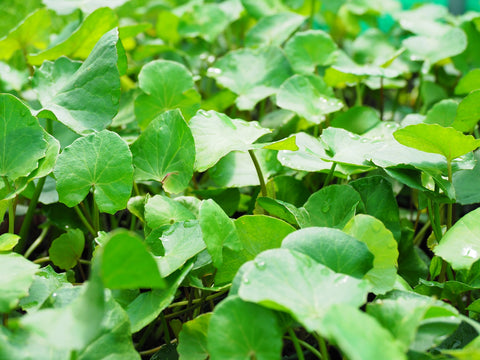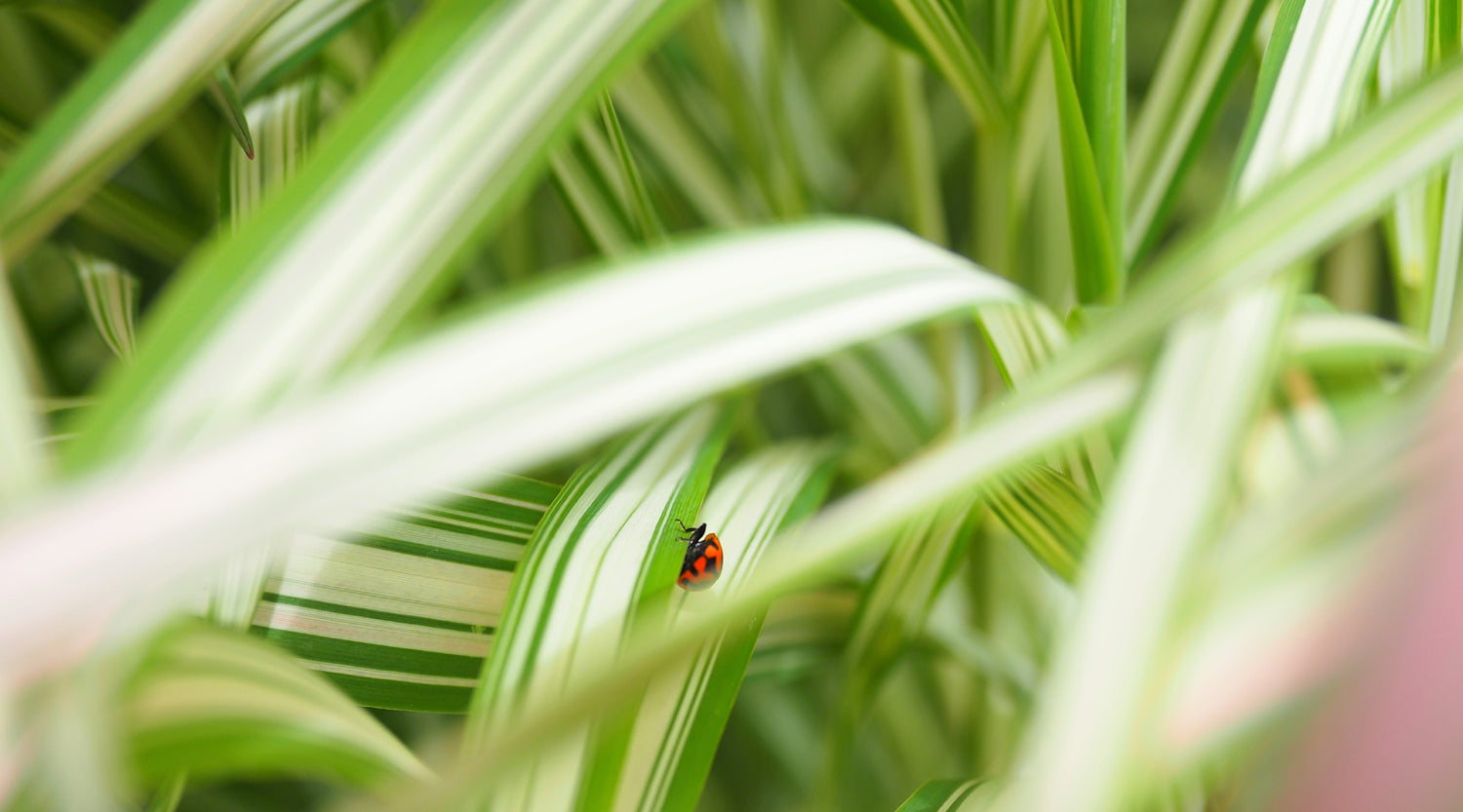Home
>
We Know Water Gardens Blog
>
The Ultimate Guide to Growing Shield Pennywort Hydrocotyle Sibthorpioides in Your Pond: Tips, Tricks, and Benefits
The Ultimate Guide to Growing Shield Pennywort Hydrocotyle Sibthorpioides in Your Pond: Tips, Tricks, and Benefits
on Mar 27, 2024
Hydrocotyle sibthorpioides, also known as Shield Pennywort, is a beautiful and versatile Australian native pond plant that is perfect for ponds. This plant has small, round leaves that grow in a whorled pattern and look like little umbrellas. On mass it creates a lush and vibrant look in your pond and during warmer months it produces tiny white flowers.
With its vibrant green leaves and small unasuming flowers, Shield Pennywort is not only visually appealing but also offers a host of benefits for your pond ecosystem.
In this comprehensive guide, we will take you through everything you need to know about successfully growing and maintaining Shield Pennywort in your pond. We'll provide you with valuable tips and tricks to ensure optimal growth and productivity.
You'll discover the best placement strategies, proper care techniques, and the ideal environmental conditions for cultivating this water-loving plant. We'll even share insights into the benefits of Shield Pennywort, such as its ability to provide shade and shelter to the water, and support beneficial organisms.
Benefits of Growing Shield Pennywort Hydrocotyle sibthorpioides in Your Pond
 Shield Pennywort Hydrocotyle sibthorpioides offers numerous benefits that make it an excellent addition to any pond and should not to be confused with a similar aquatic plant, Shield Pennywort Hydrocotyle Verticillata, which is a declared pest in some states of Australia. Firstly, its pond lily style, vibrant green leaves create a visually and functional display to your pond. This plant can quickly transform an ordinary pond into a captivating oasis that will impress both guests and passersby. Shield Pennywort also provides functional benefits for your pond ecosystem.
Shield Pennywort Hydrocotyle sibthorpioides offers numerous benefits that make it an excellent addition to any pond and should not to be confused with a similar aquatic plant, Shield Pennywort Hydrocotyle Verticillata, which is a declared pest in some states of Australia. Firstly, its pond lily style, vibrant green leaves create a visually and functional display to your pond. This plant can quickly transform an ordinary pond into a captivating oasis that will impress both guests and passersby. Shield Pennywort also provides functional benefits for your pond ecosystem.
One of the key advantages is the shade it offers. As Shield Pennywort grows, it forms a dense canopy on the water's surface, providing shade for aquatic life below. This shade is particularly beneficial for fish, as it helps regulate water temperature and reduces the risk of algae overgrowth. Additionally, the shade created by Shield Pennywort can help inhibit the growth of unwanted aquatic plants, ensuring a healthier and more balanced ecosystem.
Another benefit of cultivating Shield Pennywort is its ability to provide coverage and shelter in ponds. Australian native pond plants that grow like this provide habitat to our native fish, tadpole and frog species,offering protection from predators and harsh environmental conditions. The leaves of this plant also serve as a food source for herbivorous fish and invertebrates, contributing to a balanced and diverse food chain within your pond. By growing this one pond plant Shield Pennywort, you'll be fostering a thriving ecosystem that will attract a wide range of fascinating wildlife.
Understanding the Growth Requirements of Shield Pennywort Hydrocotyle Sibthorpioides
Before you start cultivating Shield Pennywort in your pond, it's crucial to understand its growth requirements. By providing the right conditions, you can ensure optimal growth and productivity of this water-loving plant.
Shield Pennywort thrives in full sun to partial shade, making it an ideal choice for ponds with trees or other structures that provide natural shade. While it can tolerate some direct sunlight, excessive exposure can lead to leaf burn and hinder its growth. It's important to strike a balance and find a location that offers the right amount of shade throughout the day.
In terms of water depth, Shield Pennywort prefers shallow, boggy areas of your pond, typically around 10cm deep. This plant is well-adapted to these conditions and will establish itself more easily in these areas. However, it can tolerate slightly deeper water if necessary.
When it comes to water quality, Shield Pennywort prefers slightly acidic to neutral conditions, with a pH range of 6.5 to 7.5. It can tolerate a wide range of water hardness levels, making it suitable for various types of ponds. Regular water testing and maintenance will help ensure optimal conditions for Shield Pennywort growth.
Choosing the Right Location for Cultivating Shield Pennywort Hydrocotyle sibthorpioides
 Selecting the right location for growing Shield Pennywort is crucial for its long-term success. The ideal placement will promote healthy growth and allow the plant to fulfill its aesthetic and functional role in your pond. Here are a few factors to consider when choosing the location:
Selecting the right location for growing Shield Pennywort is crucial for its long-term success. The ideal placement will promote healthy growth and allow the plant to fulfill its aesthetic and functional role in your pond. Here are a few factors to consider when choosing the location:
- Sunlight Exposure: As mentioned earlier, Shield Pennywort prefers full sun to partial shade. Consider the surrounding landscape and the position of any trees or structures that may cast shadows on your pond throughout the day. Choose a location that offers the right balance of shade and sunlight to prevent leaf burn (in extreme heat)and promote optimal growth.
- Water Depth: Shield Pennywort thrives in shallow water, typically around 10cm deep. Look for areas in your pond that meet this depth requirement. Shallow and boggy marginal areas near the pond's edge or in calm sections of the water are ideal for growing this plant. Avoid placing it in areas with strong currents or excessive water movement, as this may hinder its growth.
- Proximity to Other Plants: Consider the existing plant life in your pond and how Shield Pennywort will interact with it. While this plant can provide shade and inhibit the growth of unwanted aquatic plants, it's important to strike a balance. Avoid placing Shield Pennywort too close to other plants that may compete for resources or inhibit its growth. Allow enough space for each plant to thrive and establish its presence.
- Accessibility: Keep in mind the accessibility of the location you choose. It should be easy to reach for maintenance tasks such as pruning, feeding, or removing any dead or decaying plant matter. Avoid areas that are difficult to access or require extensive effort to reach.
By considering these factors, you can identify the perfect location for cultivating Shield Pennywort in your pond. This will ensure the plant's optimal growth and enable it to contribute to the overall beauty and functionality of your aquatic ecosystem.
1. Shade and Temperature Regulation
Shield Pennywort's dense foliage provides excellent shade for the water surface, helping to regulate the temperature in your pond. By blocking direct sunlight, the plant helps to prevent excessive evaporation and keeps the water cooler during hot summer months. This shade also helps to reduce algae growth, as excessive sunlight can contribute to its proliferation.
2. Filtration and Nutrient Uptake
Shield Pennywort plays a significant role in filtering the water by absorbing excess nutrients, such as nitrates and phosphates. These nutrients are often the main culprits behind algae blooms and poor water quality. By actively taking up these nutrients, the plant helps to reduce the chances of algae overgrowth and maintains a healthier pond ecosystem.
3. Habitat and Food Source for Beneficial Organisms
Shield Pennywort provides an excellent habitat for various beneficial organisms, such as small fish, insects, and amphibians. The dense foliage offers shelter and protection, allowing these organisms to thrive and contribute to a balanced ecosystem. Additionally, the plant serves as a food source for herbivorous fish and invertebrates, further enhancing the biodiversity of your pond.
Selecting the Right Position in your pond
When determining the placement of Shield Pennywort in your pond, it's essential to consider its sunlight requirements. While the plant can tolerate both partial shade and sunny areas, look for a spot in your pond where the plant can receive at least 6 hours of direct sunlight each day.
Another crucial factor to consider is water depth. Shield Pennywort can grow in both shallow and deep water, but it requires at least 10cm of water depth to ensure optimal growth.
Preparing the Planting Area
Before planting Shield Pennywort, it's important to prepare the planting area to give the plant the best chance of success. Start by removing any existing weeds, debris, or algae from the designated area. This will prevent competition for nutrients and ensure that the plant has a clean environment to grow in.
If your pond has a muddy or sandy bottom, consider adding a layer of aquatic soil or gravel to provide stability for the plant's roots. This will also help to anchor the plant in place and prevent it from floating away. Alternatively, continue to grow the hydrocotyle in its pot with floating pond ring. This will enable the plant to grow anywhere in your pond, regardless of its depth.
Planting and Maintenance
To plant Shield Pennywort, gently remove it from its container and carefully separate the roots. Dig a small hole in the planting area and place the plant, ensuring that the roots are fully covered with soil or gravel. Gently press down the soil to secure the plant in place.
Once planted, regularly monitor the pond's water level and ensure that it remains at the appropriate depth for Shield Pennywort. Trim any dead or decaying leaves to maintain the plant's overall health and appearance. Additionally, periodically check for any signs of pests or diseases and take appropriate measures to prevent or treat them.
Additional Tips and Tricks for Successful Growth
To further enhance your success in cultivating Shield Pennywort, here are some additional tips and tricks to keep in mind:
1. Feeding: Shield Pennywort is a hardy Australian native pond plant that generally does not require extra feeding. However, if you notice slow growth or yellowing leaves, you can consider using a slow-release aquatic fertiliser.2. Avoid Overcrowding: While Shield Pennywort can spread and form dense colonies, it's important to avoid overcrowding. Overcrowded plants can limit airflow and sunlight penetration, leading to poor overall growth. Regularly thin out the plant if necessary to maintain a healthy balance.
3. Winter Care: In colder climates of Australia, Shield Pennywort may go dormant or die back during winter months. If this occurs, remove any dead or decaying plant material from the pond to prevent nutrient buildup .The plant will typically send out new runners once the temperatures rise in spring.
4. Regular Monitoring: Keep a close eye on the overall health and growth of Shield Pennywort. If you notice any signs of stress, such as wilting leaves or slow growth, adjust the environmental conditions accordingly. Regular monitoring will help you address any issues promptly and ensure the plant's longevity.
Cultivating Shield Pennywort Hydrocotyle Sibthorpioides in your pond can transform it into a thriving oasis of natural beauty. With its unique leaf arrangement, ability to provide shade, habitat for frogs and fish, and support beneficial organisms, this plant offers numerous benefits for your pond ecosystem.
By following the tips and tricks outlined in this guide, you'll be well on your way to successfully growing and maintaining Shield Pennywort. Remember to select the right placement, prepare the planting area, and provide adequate care and maintenance.
So, go ahead and add this Aussie native pond plant to your pond.
© We Know Water Gardens 2024
Share

